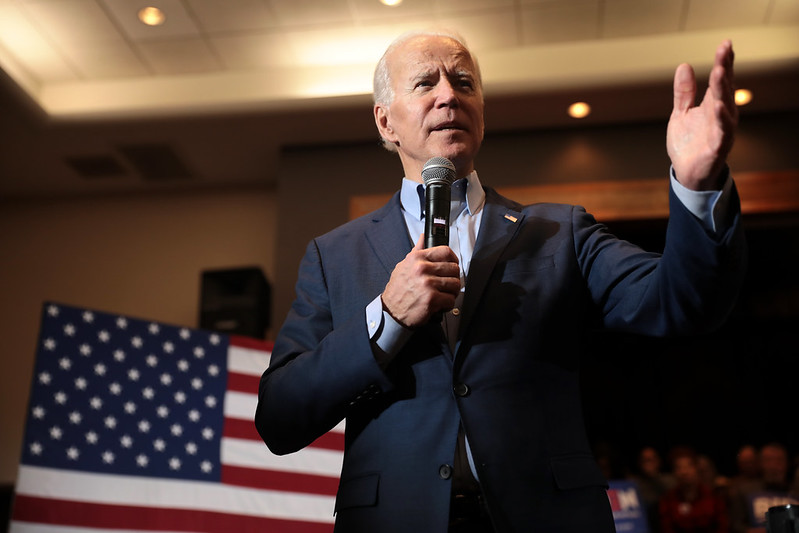Biden’s proposal to forgive student loan debt alleviates some of the burden for borrowers, but it leaves future students without a way to keep from getting into debt in the first place.
The idea of free college is an appealing option for those who want to alleviate student debt all together. However, these proposals are limited to students who attended public colleges and universities, leaving the 26% of students who attend private universities without debt relief. Additionally, these plans often only account for the cost of tuition, rather than the costs of attendance (COA), which includes fees, room and board, textbooks, supplies, transportation, and living expenses. Depending upon where a student lives, these costs can add up to be more than their tuition bill.
How then can we make college more affordable for all students while still accounting for the total COA? By taking students out of the lending process.
When a student takes out a federal student loan, the money is sent directly to their institution (both public and private) at the beginning of the term, and is often spent as soon as it is received. The money never crosses paths with a student until after they leave school. From an institutional budget perspective, the student is simply a means to an end to receive a consistent cash flow of federal funds. This begs the question: why is a student loan even necessary in the first place?
The ED spends $120 billion every year in federal student aid, known as Title IV funds. $30 billion, or one quarter, of these funds are awarded in the form of Pell Grants, the ED’s most popular needs-based tool to reduce the cost of college. What if these Title IV funds were given directly to colleges and universities, on a per student basis, as a federal investment in higher education rather than as a component of the Title IV student aid program?
Retooling the Title IV program in this manner comes with a number of benefits for both institutions and students:
- Eliminating the need for FAFSA: Notoriously complicated and overly burdensome for the majority students to complete, the Free Application For Student Aid (FAFSA) helps to determine how much aid a student may be eligible to receive based upon their financial need. Allocating money per student to each institution rather than requiring the student to prove they need aid saves time, a lot of hassle, and administrative overhead. Moreover, getting rid of the FAFSA has been a popular idea for some time, but has failed to get traction in light of more pressing policy issues. This could be an easy win for legislators looking to make inroads with a growing constituency of young voters.
- Allows institutions to hand out more financial aid: By providing schools with a guaranteed amount of federal funds to be applied to each student’s tuition bill, colleges will have the ability to award more generous student aid packages with an increased likelihood to cover the total COA. In other words, a university’s dollars will go further in helping students attend their school.
- Better ROI for the economy: $120 billion is an expensive annual investment, but so is the estimated $435 billion in losses the Title IV program is projected to cost taxpayers. Since federal student loans are awarded based solely on need, the federal government is issuing high-risk loans with little assurance they will be paid back. As of October 2020, 11% of student loan borrowers were in default (failure to pay after 270 days) within a year of graduating, accounting for approximately $124 billion in unpaid student loan debt. Moreover, student lenders report delaying major life milestones such as getting married or buying a house due to student loan debt or poor credit scores from their educational debt burden. Reducing the overall COA will reduce student debt, freeing up more money in the economy to be spent on goods and services.
- The regulatory/oversight structure is already in place: Title IV funds already come with a number of regulatory strings attached. First of all, institutions must be accredited per the Higher Education Act in order to receive federal student aid dollars. Then, in order to remain Title IV eligible, colleges and universities must comply with a number of regulations such as FERPA, Clery, and Title IX. Institutions are equipped to comply with these regulations and do not stand to incur additional burdens to be Title IV eligible in the adoption of this policy proposal.
As with any policy initiative, there are some critiques of this Title IV model:
- What’s preventing schools from increasing tuition to get more revenue? Currently, aside from any state-imposed regulations, there are no federal limits on tuition increases. Between 1989 and 2016, the cost of attending college grew by 2.6% annually, meaning it increased at a rate eight times that of wages. Without additional action taken by Congress or the ED to prevent schools from increasing tuition, this plan will not solve this problem. However, adding an additional regulatory requirement (per the current structure described above) that schools may not increase their COA annually by more than rate of inflation can help to resolve this issue.
- A student will get the same amount of money regardless of need. How is this fair? Yes, under this model the federal government will not discriminate on the basis of need, meaning that both a poor and rich student will be worth the same amount to their institution. Need-based funding can still be awarded by both states (e.g CalGrants) and individual institutions (and will require a FAFSA-like application). The truth is, when it comes to paying for college, or even making college free, there’s no such thing as fair as long as there is such striking income inequality in the US.

 What's Next for the the Next Administration?
What's Next for the the Next Administration?